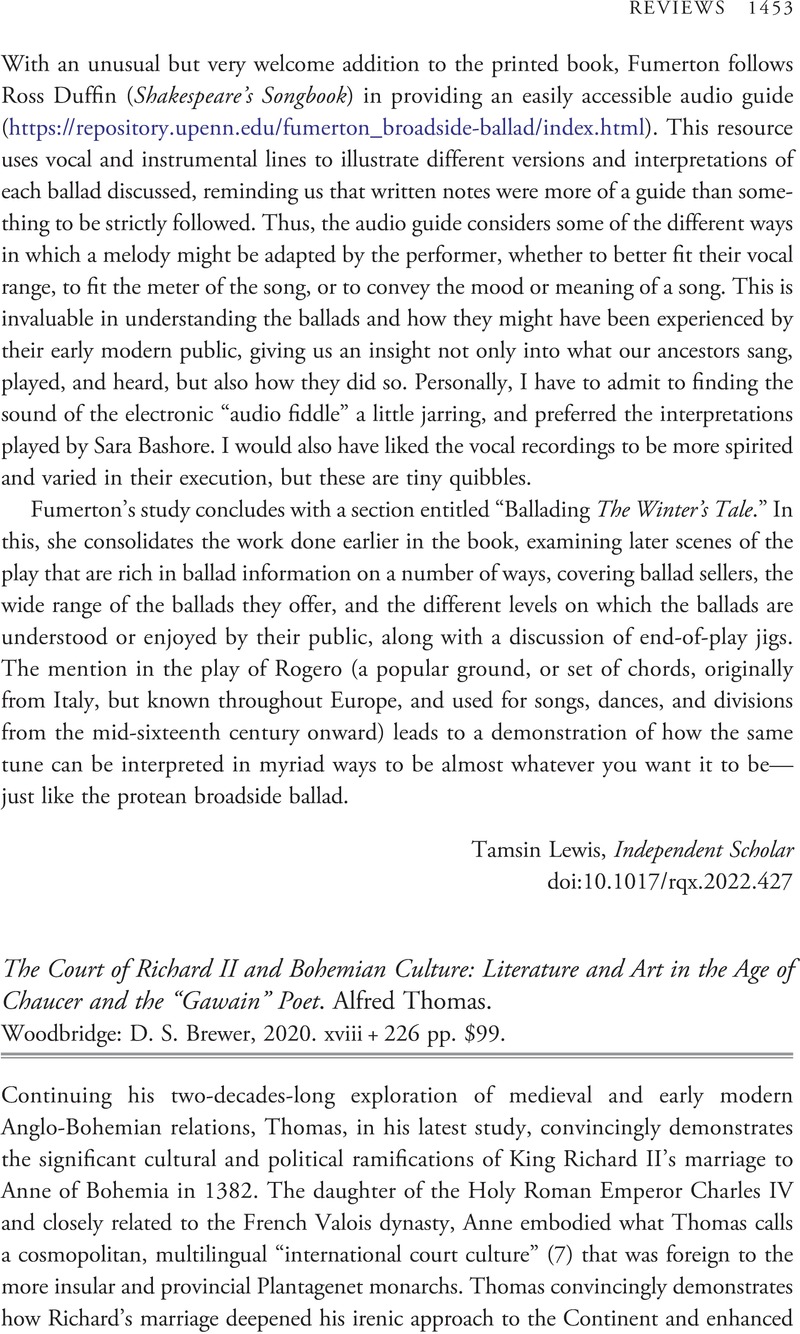No CrossRef data available.
Article contents
The Court of Richard II and Bohemian Culture: Literature and Art in the Age of Chaucer and the “Gawain” Poet. Alfred Thomas. Woodbridge: D. S. Brewer, 2020. xviii + 226 pp. $99.
Review products
The Court of Richard II and Bohemian Culture: Literature and Art in the Age of Chaucer and the “Gawain” Poet. Alfred Thomas. Woodbridge: D. S. Brewer, 2020. xviii + 226 pp. $99.
Published online by Cambridge University Press: 09 January 2023
Abstract
An abstract is not available for this content so a preview has been provided. Please use the Get access link above for information on how to access this content.

- Type
- Review
- Information
- Copyright
- Copyright © The Author(s), 2022. Published by the Renaissance Society of America



